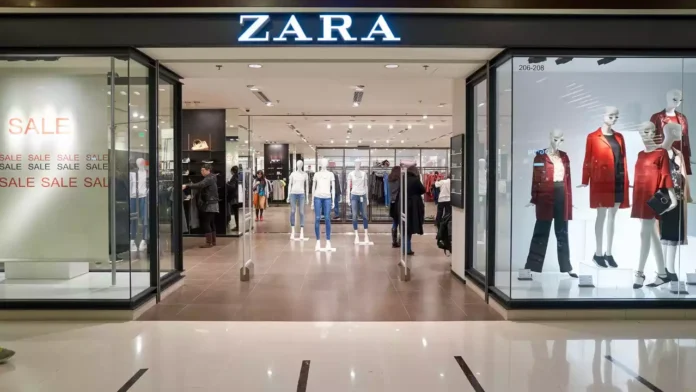Inditex, the Spanish conglomerate behind the renowned fashion label Zara, experienced its most sluggish sales expansion in India during FY24, excluding the pandemic-affected year. The world’s leading fashion entity encountered mounting competition from international adversaries within the clothing industry, which is becoming progressively crowded.
Inditex Trent, the collaborative venture with Tata overseeing 23 Zara outlets in India, witnessed an 8% revenue increase to INR 2,775 crore in the previous fiscal year. This surge was notably lower compared to the 40% growth recorded the year before, as outlined in Trent’s annual report. However, net profit also experienced a decline, reaching INR 244 crore, marking an 8% decrease.
Zara’s arrival in the country over a decade ago marked a phenomenal success story, initially doubling sales every two years. However, in recent years, the pace of expansion has slowed down. P. Venkatesalu, CEO at Trent, acknowledges the intense competition and real challenges within the market. Yet, he remains optimistic, highlighting the vast opportunity and market size, suggesting that multiple successful players can thrive. Trent is positioned well to navigate this next phase of growth by capitalizing on its platform and growth strategies, as mentioned in the report.
Continue Exploring: Fashion giant Inditex to introduce Bershka, Zara Home to Indian market this year
Trent, the operator of Westside, has redirected its attention towards its lower-priced fast fashion label, Zudio. In the previous fiscal year, Zudio expanded its footprint by opening approximately four new stores per week on average, bringing the total store count to 545. Additionally, Trent has a distinct partnership with the Inditex group to manage Massimo Dutti outlets in India. This collaboration resulted in a 14% revenue increase, amounting to INR 102 crore.
In recent years, consumer demand has faced challenges, requiring brands to exert additional efforts to achieve same-store growth. Much of the top-line growth for brands has been driven by the addition of new stores, according to experts.
Devangshu Dutta, the founder of retail consulting firm Third Eyesight, noted that many international and premium Indian brands are vying for a relatively small portion of the population concentrated in major urban centers. While the Indian market stands out amidst the economic challenges faced by major global economies, the influence of global pressures might affect brands’ confidence in expanding. Dutta emphasized that this doesn’t necessarily indicate “fatigue” for the brand.
“However, if the battle for customer attention becomes fiercer and their options become more dispersed among a plethora of firms, it will undoubtedly influence the performance of each brand,” he continued.
As the world’s second most populous nation, India presents an appealing market for apparel brands, particularly as younger demographics increasingly adopt Western-style fashion. Inditex primarily manages Zara’s backend operations and merchandise sourcing, while Tata’s expertise lies predominantly in real estate identification and location scouting.
Continue Exploring: Westside strengthens South India presence with three new store openings





